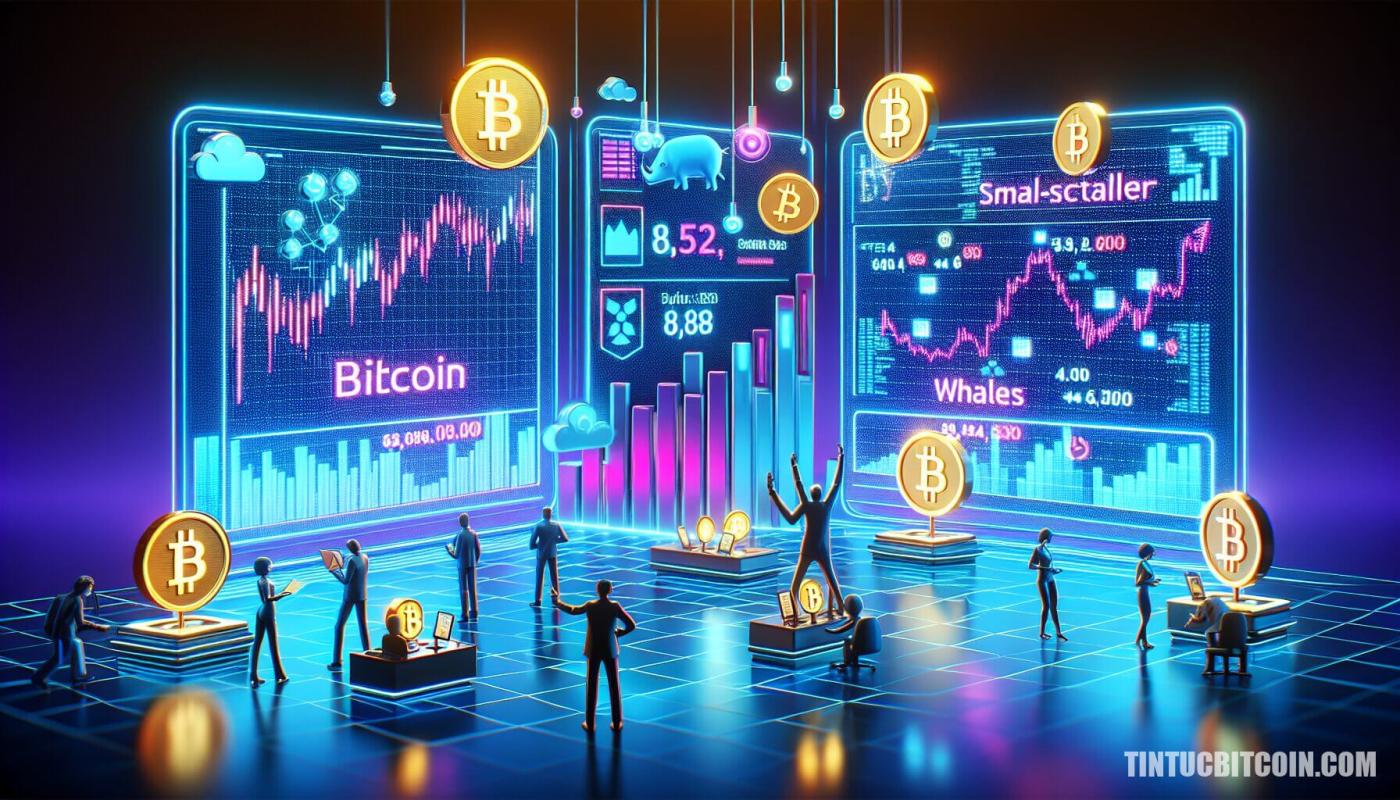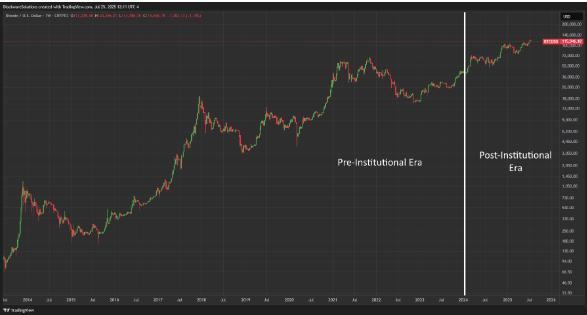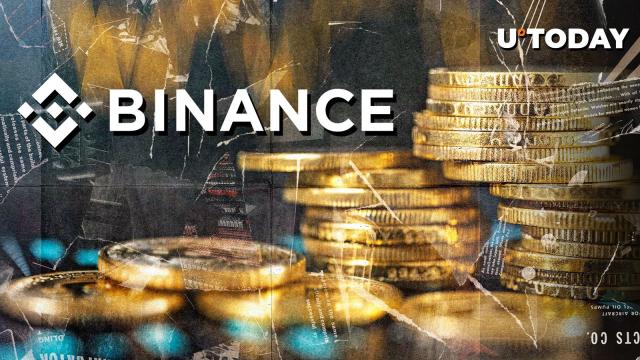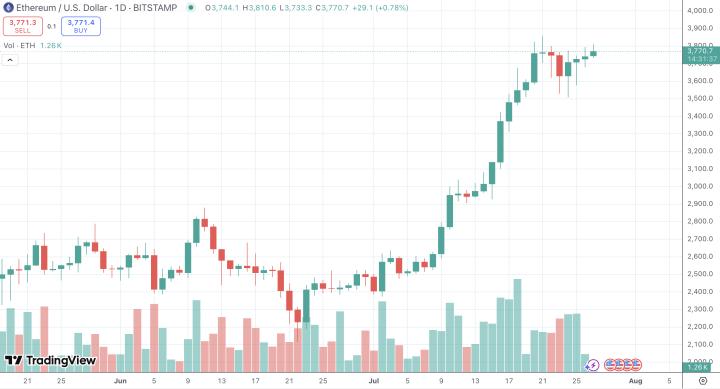
Bitcoin is demonstrating strength as outflow from exchanges reaches the year's highest level, despite over 60,000 BTC flowing into exchanges; whales maintain their positions, creating an accumulation context leading to the next price surge.
This indicates a significant long-term investment demand, while small investors actively participate in the futures market, forecasting that a solid accumulation phase will pave the way for new growth.
- Bitcoin outflow from exchanges reaches the year's highest level, despite over 60,000 BTC deposited in just one day.
- Whales maintain a stable status while small investors intensify futures contract trading.
- The market is experiencing a certain accumulation phase, predicting a potential price breakout in the near future.
What are the recent developments in the Bitcoin market?
The Bitcoin market recorded over 60,000 BTC deposited into exchanges, however, the outflow reached its peak in the past year, indicating that the hoarding demand still dominates.
"While funds entering exchanges are typically seen as a negative sign, when the withdrawal volume is overwhelming, it demonstrates the market's astonishing absorption strength."
According to CryptoQuant report, July 2025
During the past week, major events in the cryptocurrency market led to over 60,000 BTC being brought to centralized exchanges. Although this is usually a selling pressure sign, the surprise came from the opposite direction: over 90,000 BTC were quickly withdrawn from exchanges in the same day, raising the net withdrawal to nearly 29,000 BTC – the highest level since the beginning of the year.
The result shows an extremely large "absorption" demand from long-term investors. Consequently, Bitcoin's price did not significantly decline but maintained key support levels, consolidating a positive market outlook in the medium and long term.
Why did Bitcoin outflow from exchanges reach its annual peak?
The peak Bitcoin withdrawal occurs as investors tend to transfer coins to cold storage or long-term storage locations when confidence in price increases becomes stronger amid short-term fluctuations.
"The decline in exchange reserves clearly reflects the persistence of holding and accumulation by both institutional and large individual investors, a fundamental sign of growth prospects."
Michael Saylor, MicroStrategy Chairman, speaking on Bloomberg, 2025
The process of withdrawing Bitcoin from exchanges typically occurs when investors want to protect assets from risks, especially in an unstable market or when bull market signs appear. Data from CryptoQuant shows BTC reserves on exchanges dropped to a historic low in July 2025, now under 2.1 million BTC across major exchanges, continuously declining since the year's start.
Compared to previous periods, after such large net withdrawals, the market usually enters a prolonged growth cycle. For example, in 2020-2021, after continuous withdrawals, Bitcoin increased from $10,000 to over $60,000 within just 12 months.
What is happening with the small investor group in the Futures market?
Small investors are strongly increasing futures contract trading activities, primarily focusing on small-value positions in the $116,000-$120,000 price range.
"The explosive growth in small futures contracts indicates a rising FOMO wave, especially from inexperienced investors, which both creates momentum and raises significant volatility risks."
Ki Young Ju, CryptoQuant CEO, statement on X channel, July 2025
While institutional capital slows down, futures contract activity on exchanges shows a clear increase in small orders. The retail investor group, especially in Asia, has high leverage ratios and is ready to accept risks to seek quick profits.
A report from glassnode (2025) indicates that the open interest on Bitcoin Futures from small investors increased by over 35% compared to the previous month, while the liquidation rate for small orders also increased. This is a signal to monitor, as if the market experiences significant volatility, this group can quickly be liquidated, creating large-scale "stop-loss hunting" events.
Why are Bitcoin whales not selling in the current phase?
Whales maintain their positions because they believe the long-term upward trend remains solid, thus accumulating more instead of selling when the market is in an important accumulation zone.
"Bitcoin whales are typically silent in accumulation zones before major price increases, with history repeatedly proving that strong waves always come after this group's 'standstill'."
James Butterfill, Research Head at CoinShares, 2025
Data from cold wallet tracking platforms like Whale Alert and Santiment shows no large transactions from whale groups to exchanges for selling. Conversely, the volume deposited to exchanges from large cold wallets is at its lowest in the past 5 months, while whale addresses continuously accumulate BTC during short-term price dips.
This aligns with accumulation phases that occurred in the past like in 2015, 2019, 2020, where after accumulation periods, the market followed with strong bull runs. The whales' stability further reinforces solid confidence in the long-term upward trend.
How do institutional and small investor funds differ in the current context?
Institutional funds primarily demonstrate this by strongly withdrawing from exchanges for long-term storage, while small investor funds lean towards short-term trading with high leverage ratios in the futures market, creating two extremes in investment strategies.
| Characteristics | Institutional Capital Flow | Retail Capital Flow |
|---|---|---|
| Trading | Long-term storage withdrawal, low trading | Active Futures trading, high leverage |
| Objective | Accumulation, capital preservation, strategic investment | Quick profits, risk acceptance |
| Price Impact | Price foundation, maintaining trend | Increasing short-term volatility |
| Market Sentiment | Stable, consistent | Easily fluctuating, FOMO/FUD |
With institutional capital flow, long-term storage is often a signal leading to a major price increase. Conversely, strong retail capital flow at the end of an upward wave potentially harbors a bull trap when FOMO reaches its peak.
Arcane Research's survey (June 2025) indicates that 65% of trading volume on CEX during this period comes from futures contracts valued under 50,000 USD, while BTC transfer to cold storage increased by 18% compared to the previous quarter for wallets with balances over 1,000 BTC.
What does this development forecast for the Bitcoin market in the near future?
The trend of peak capital withdrawal and whale accumulation signals a solid accumulation phase that could open a new growth period for Bitcoin if demand continues to outweigh profit-taking pressure.
"The Bitcoin market has not shown signs of topping, on-chain data reveals supply continues to be drawn to cold storage, with the price foundation being solidified before potential breakthrough growth."
Willy Woo, On-chain Analyst, July 2025
Typically after prolonged accumulation periods by whales and institutional investors, a strong surge will appear when new capital enters the market. On-chain databases confirm circulating supply on exchanges is gradually shrinking, while whale groups continue to accumulate, proving the recent dump was mostly short-term investor profit-taking.
History shows that when BTC on exchanges reaches its bottom and new capital continues flowing into the market, the likelihood of a sustained strong price increase is very high. For example, in early 2021, the market underwent a similar cycle before reaching an ATH of 69,000 USD.
What potential risks should Bitcoin investors be aware of at this moment?
Despite positive on-chain signals and whale actions, the market still faces risks such as volatility from retail groups, macro events, or changes in digital asset management policies in major countries.
Beyond short-term volatility from retail investors using high leverage, major out-of-industry events like US Federal Reserve interest rate changes, delayed Bitcoin-related ETF packages, or geopolitical fluctuations can strongly impact market psychology.
JP Morgan experts warn: "Volatility levels may escalate if whales unexpectedly break the accumulation status or large ETF capital flows are withdrawn from Bitcoin derivative investment funds in the next quarter." (Digital Asset Strategy Report, JP Morgan, July 2025).
How has the market recovered from similar fluctuations in the past?
History shows that after each large capital outflow from exchanges and whale accumulation phase, Bitcoin has opportunities to enter a prolonged price increase cycle if short-term selling pressure is completely eliminated.
A similar pattern appeared in late 2020, when the market witnessed significant BTC net withdrawal from exchanges. The result was a historic price surge in early 2021 that drove Bitcoin from 20,000 to a peak of 69,000 USD in just 6 months.
Research organizations like Blockware Intelligence (2023, 2024) all note that this pattern reflects long-term investment demand and major players' confidence in Bitcoin's future. Those who persistently accumulate during this period typically achieve high profits after 6-12 months.
Comparing Bitcoin absorption and accumulation levels with previous cycles
Compared to strong accumulation cycles in history, current BTC supply absorption is among the strongest, particularly notable due to large-scale net withdrawals from institutions and whales.
| Cycle | Peak Net BTC Withdrawal (Daily) | Remaining BTC on Exchanges | Price Variation After 3 Months |
|---|---|---|---|
| 2020 (Pre-bull run) | 18,500 BTC | 2.4 million BTC | +230% |
| 2023 (Market Recovery) | 12,100 BTC | 2.15 million BTC | +57% |
| 2025 (Current) | 29,000 BTC | 2.08 million BTC | Currently in accumulation growth phase |
Looking at the comparison table, the 2025 accumulation peak has far exceeded previous years, reinforcing the forecast that Bitcoin is about to enter a new growth phase if capital flow remains tight and exchange supply continues to erode significantly.
What should investors do during this accumulation and trend establishment phase?
Investors should proactively research defensive strategies, control risks, and consider steady accumulation during this solid accumulation phase instead of FOMO-chasing short-term waves.
"Staying consistent with DCA (periodic partial investment) strategy helps investors avoid emotions and crowd effects, optimizing long-term investment performance in the Bitcoin market."
Ly Xuan Binh, CEO TinTucBitcoin, July 2025 analysis
Periods of strong capital withdrawal from exchanges are also times when the market experiences supply scarcity, creating premises for subsequent price increases. However, buying should be considered based on on-chain analysis, technical indicators, and macro news updates.
Experts recommend investors build long-term portfolios, prioritize asset security in cold storage, avoid excessive leverage, and regularly reassess trends based on actual data, instead of chasing FOMO effects generated by retail groups or temporary signals.
Frequently Asked Questions
1. What signs confirm that the Bitcoin market is accumulating solidly?
The peak of BTC withdrawals from exchanges, long-term whale hoarding, and a sharp decrease in BTC reserves on exchanges are authentic signs of sustainable accumulation, confirmed by on-chain data from glassnode.
2. What should small investors do when whales have not sold, but Futures trading volume increases strongly?
Be cautious, prioritize risk control, limit leverage usage, avoid FOMO psychology, and focus on long-term investment to prevent being swept up by short-term fluctuations.
3. How does moving Bitcoin to Cold Storage affect the price?
When the circulating supply on exchanges decreases, the market becomes scarce, easily pushing prices higher if new capital flows in suddenly, especially in a context of deep accumulation and growing long-term investment demand.
4. What signals typically precede strong price increases?
Usually appears after whales remain 'stationary', net outflows from exchanges peak, and market sentiment shifts from anxiety to cautious expectation, as seen in previous growth cycles.
5. What are the primary short-term risks in the Bitcoin market currently?
Unexpected volatility from small investors using high leverage, macro events outside the cryptocurrency market, and legal risks in major countries.
6. How can 'Bull Trap' and 'Bear Trap' be identified in this phase?
Abnormal increases in Futures orders, strong leverage liquidation, and price movements inconsistent with net withdrawals are warning signs of Bull Trap/Bear Trap.
7. What method should be used to accumulate Bitcoin in this stage?
Prioritize DCA (periodic investment) combined with Cold Storage, while also considering additions when prices correct at support levels confirmed by on-chain data and technical analysis, as recommended by TinTucBitcoin experts.







